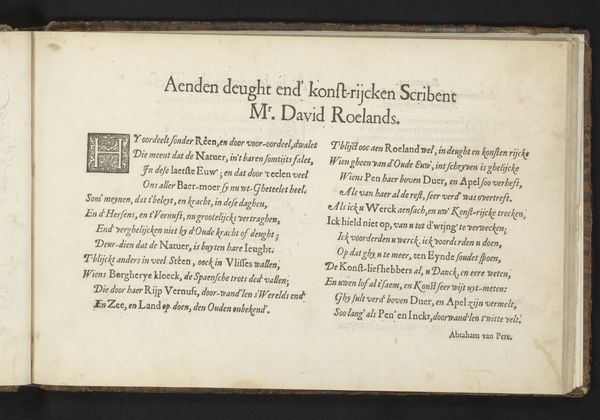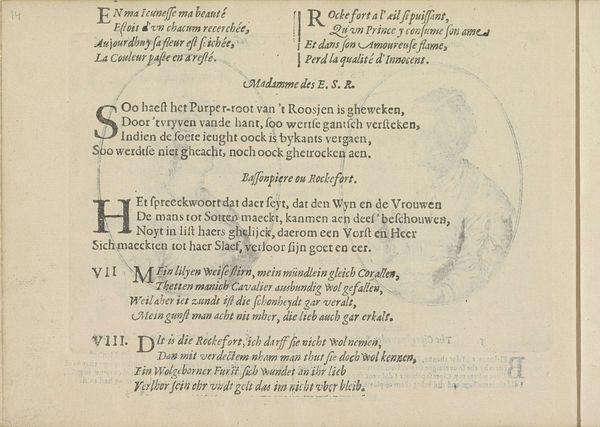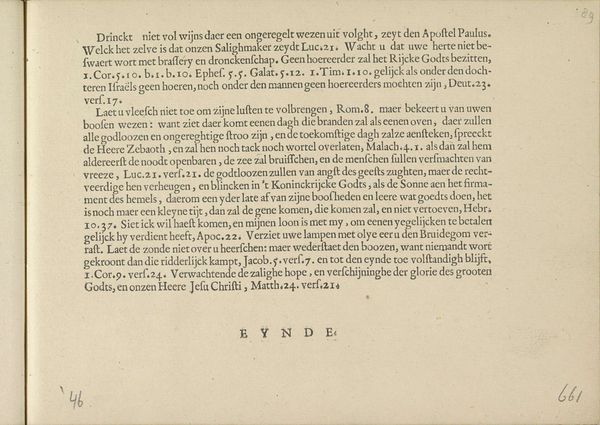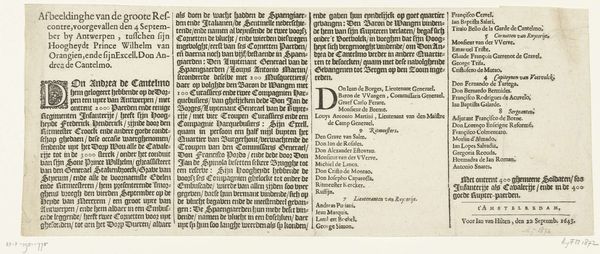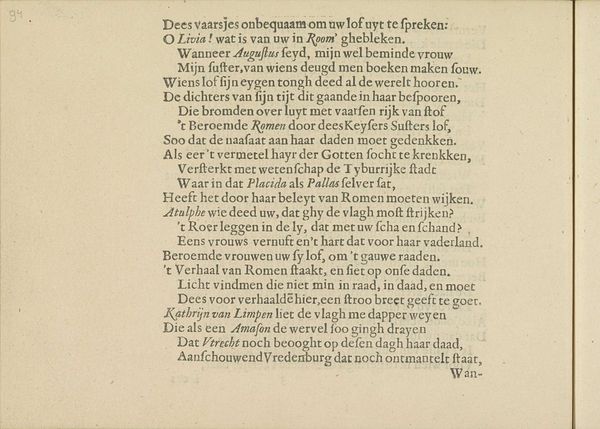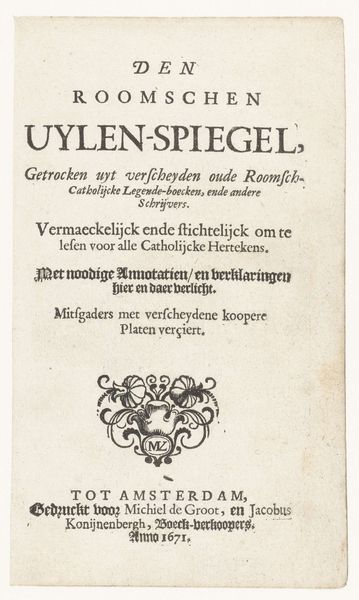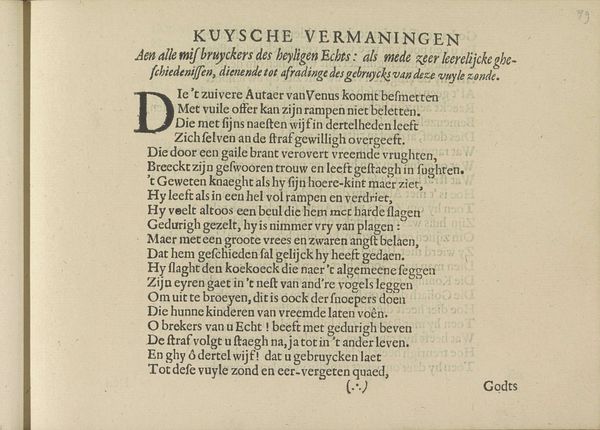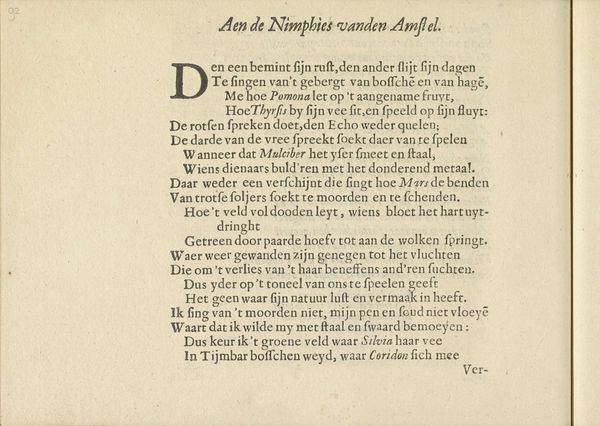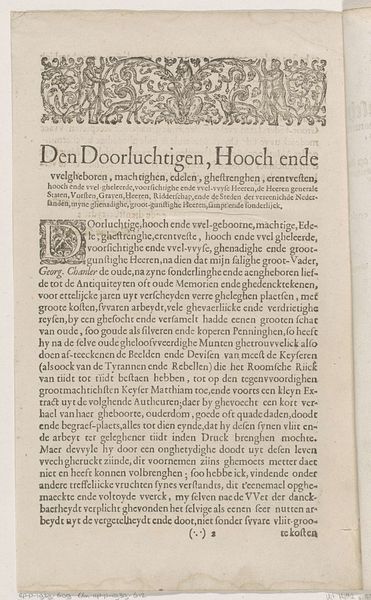
Verzen bij de prent van de brand in het Oude Stadhuis van Amsterdam, 1652 1652
0:00
0:00
print, engraving
#
comic strip sketch
#
hand-lettering
#
baroque
# print
#
old engraving style
#
hand drawn type
#
hand lettering
#
personal sketchbook
#
hand-drawn typeface
#
pen-ink sketch
#
pen work
#
sketchbook drawing
#
cityscape
#
engraving
Dimensions: height 151 mm, width 387 mm
Copyright: Rijks Museum: Open Domain
Curator: Here we have "Verses on the Print of the Fire in the Old Town Hall of Amsterdam, 1652", dating from, well, 1652. It was created by Coenraet van Wildenbergh. Editor: My first thought is that it looks like a medieval broadside meets a very early infographic. There's a rawness and immediacy to it, even after all this time. It’s got that kind of rough-and-tumble feel you see in street art today. Curator: Exactly! It's an engraving, a print meant for wide distribution after the fire. What you’re sensing is that raw emotional quality, intended to resonate with a city in crisis. Note how the text is laid out-- almost like sequential panels in a comic strip. Each block of text serves a different narrative purpose. Editor: Right. So, we're not just getting a dry report of the facts. Wildenbergh’s giving us different viewpoints, feelings swirling in the aftermath. I'm getting a strong sense of communal grief, mixed with a flicker of hope perhaps. Curator: Indeed. The different sections present varied perspectives. We have the initial shock described poetically – notice the invocation of the sun and moon. Then, another voice laments the city’s loss, appealing to God for help. Finally, personifying the Town Hall, Wildenbergh offers a resilient outlook: loss is present, but reconstruction and renewal will emerge. The "again an eighth World Wonder" conveys defiance. Editor: And look at the lettering! Some of it feels almost frantic. There's a sense of urgency in the very way the words are presented. You can feel the artist trying to get this out there fast. And the lack of finesse strangely adds to its power, doesn't it? Almost like a shouted message from the rooftops! Curator: Yes! While a skilled draughtsman, Wildenbergh prioritized message and emotion over refined artistry, reflecting the general atmosphere. Considering that Old Town Hall embodied Amsterdam's civic pride, this print served as catharsis and a rallying cry during that devastating time. Editor: You know, I went in thinking, "oh, just a historical document", but actually it's an incredibly moving piece. To see such strong emotions etched right into the page makes the event feel present. Curator: Precisely. And in its immediate, almost messy aesthetic, we see the raw emotions of a city in flames—and a community’s spirit refusing to be extinguished.
Comments
No comments
Be the first to comment and join the conversation on the ultimate creative platform.
